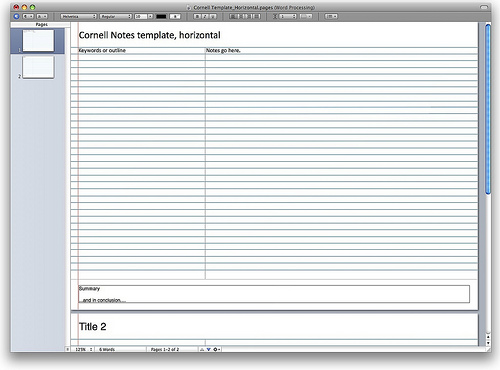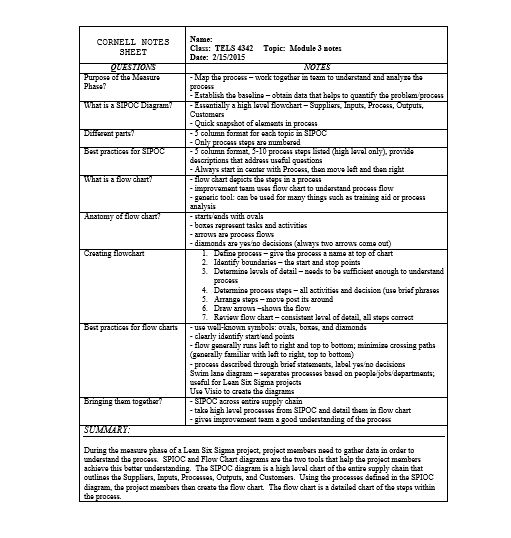Do you ever find students do not review the assigned reading material, lectures, videos, etc. in advance of class? If you answered yes to this question, you are not alone. My experience is that many instructors struggle with how to conduct meaningful in-class discussions, activities, etc. when students do not come to class prepared. Because I utilize many approaches for actively engaging students in the learning process, both inside and outside the classroom, I have continuously been frustrated and puzzled about how to get student to prepare adequately for class sessions.
An approach I recently discovered has helped me to change this in the courses I teach, and I want to briefly share it with you in the hope that it can help you too. This approach is called Cornell Notes, and it is a simply yet effective method for students to review assigned materials and, in a sense, create their own study guides throughout a course. This method helps students learn to effectively take notes. It simply splits a regular size piece of paper into three separate sections where students take notes and summarize what they have been assigned to read or watch. This method appropriately puts the responsibility on the student to review assigned readings, videos, etc. It also helps them dig deeper and fully immerse themselves in the course content. In this case, students use writing as a way to learn by taking notes on key concepts from the items they have been assigned to read or watch.
For your reference, please see the example below regarding the operationalization of this approach. This example of the Cornell Notes method was generated by a recent student of mine for a module in one of my courses that teaches students how to document organizational processes using different types of process maps/flowcharts. While this example illustrates the electronic use of this method, it is also acceptable, and sometime preferred, to have students complete their Cornell Notes by hand.
When I first started using this approach in my courses, I was not sure how students would react. Would they just view it as busy work? Would they actually do it? Would it help them? I made completing Cornell Notes a required assignment for each module in the course, and it was worth 5 percent of the students’ overall semester grade. I did not tell students there was a page requirement (such as 5 pages of Cornell notes per chapter in their textbook). But, I did share specific examples about what was expected, and if their Cornell Notes did not fulfill these expectations, they received a zero grade.
My results from having students use the Cornell Notes method has been fairly positive. For the most part, students understood the value of doing it, most (not all) consistently completed their Cornell Notes throughout the course, and several commented that it was in fact helpful to them. I also found that, like I had intended, students were better able to keep up with the course material and this enhanced our in- class discussions, activities, etc.
For more information regarding the Cornell Notes method, please see the following resources:
Description: http://coe.jmu.edu/learningtoolbox/cornellnotes.html
Cornell Resource: The Cornell Note Taking System – Learning Strategies Center
YouTube Video: https://www.youtube.com/watch?v=WtW9IyE04OQ





